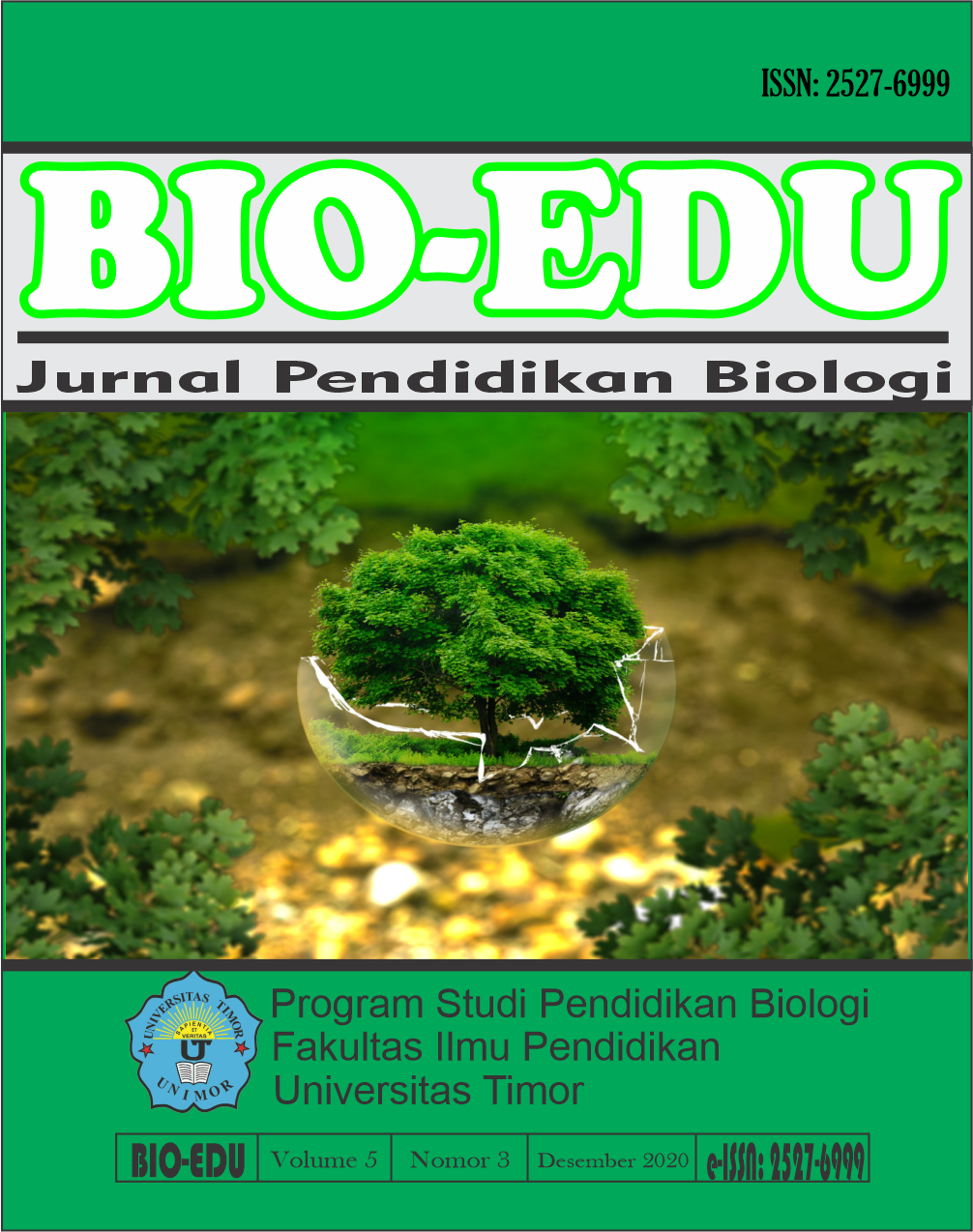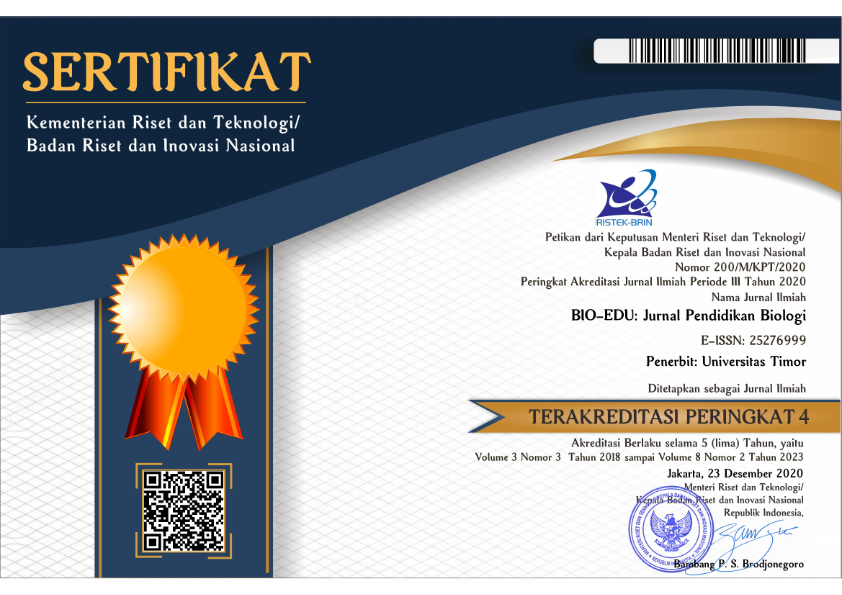Diversity of Food Source and Foraging Behavior of Tetragonula laeviceps (Hymenoptera: Meliponini) in Parigi Selatan Sub District
DOI:
https://doi.org/10.32938/jbe.v5i3.735Keywords:
Diversity; food source; foraging behavior; Tetragonula laeviceps; Parigi SelatanAbstract
Tetragonula laeviceps is a type of stingless bee that is currently widely cultivated in Indonesia due to ability to produce various products that have many uses for human life. Foraging behavior is the main activity of honey bee to fulfill
their daily needs. The availability of food source is one of the important factor that influence the foraging behavior of Tetragonula laeviceps. This study aims to determine the diversity of food source and foraging behavior of Tetragonula laeviceps. Observing the diversity of food source through identification of pollen and observing the foraging behavior of the bee. The diversity of pollen found in Parigi Selatan Regency showed that there were 20 families of food sources of Tetragonula laeviceps and the most frequently visited family is Arecaceae. Foraging behavior of Tetragonula laeviceps begins at sunrise until evening. The peak of activity occurs in the morning around 08.30-08.40 WITA and the afternoon around 15.30-15.40 WITA which is related to the availability of food source. Environmental factors (air temperature, humidity, and light intensity) affect the foraging behavior of Tetragonula laeviceps.
Downloads
Published
Issue
Section
License
The Authors submitting a manuscript do so on the understanding that if accepted for publication, the copyright of the article shall be assigned to BIO-EDU: Jurnal Pendidikan Biologi and Departement of Biology Education, Universitas Timor as the publisher of the journal. Copyright encompasses rights to reproduce and deliver the article in all form and media, including reprints, photographs, microfilms, and any other similar reproductions, as well as translations.
BIO-EDU journal and Departement Biology Education, Universitas Timor, and the Editors make every effort to ensure that no wrong or misleading data, opinions, or statements be published in the journal. In any way, the contents of the articles and advertisements published in BIO-EDU are the sole and responsibility of their respective authors and advertisers.
Users of this website will be licensed to use materials from this website following the Creative Commons Attribution-ShareAlike 4.0 International License.



















